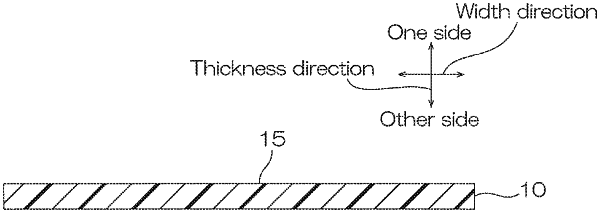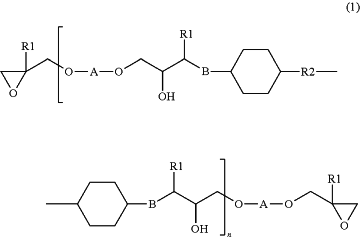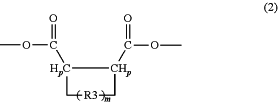| CPC C08G 59/38 (2013.01) [G02B 6/4212 (2013.01)] | 7 Claims |

|
1. An epoxy resin photosensitive composition for an optical waveguide for forming an optical waveguide by being applied to a substrate and patterned by photo-processing comprising:
a hydrogenated alicyclic epoxy resin represented by the following formula (1);
a polyfunctional epoxy resin having 3 or more epoxy groups; and
a photocationic polymerization initiator,
wherein the polyfunctional epoxy resin having 3 or more epoxy groups is a cross-linking component which is cross-linked with the hydrogenated alicyclic epoxy resin, and is blended into the epoxy resin photosensitive composition for an optical waveguide in order to form the optical waveguide as a cured product,
wherein the polyfunctional epoxy resin is at least one selected from the group consisting of an aromatic polyglycidyl ether and an alicyclic polyglycidyl ether,
wherein a content ratio of the polyfunctional epoxy resin is 20 parts by mass or more and 200 parts by mass or less with respect to a solid content of 100 parts by mass of the hydrogenated alicyclic epoxy resin,
wherein formula 1 is:
 wherein:
R1 represents a hydrogen atom or a methyl group;
R2 represents at least one divalent group selected from the group consisting of —CH2—, —C(CH3)H—, —C(CH3)2—, and —SO2—;
A represents an arylene group having two or more branched alkyl groups having 4 or more carbon atoms as a substituent;
B represents a divalent group represented by the following formula (2) or ether bonding;
“n” represents a positive number, and
wherein formula (2) is:
 wherein R3 represents an alkylene group which may have a substituent;
“p” is 1 or 2;
“m” is 0 or 1.
|